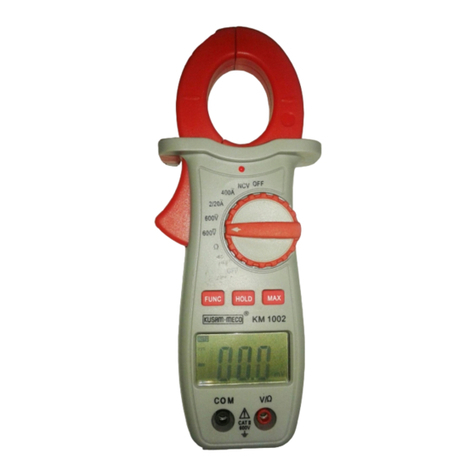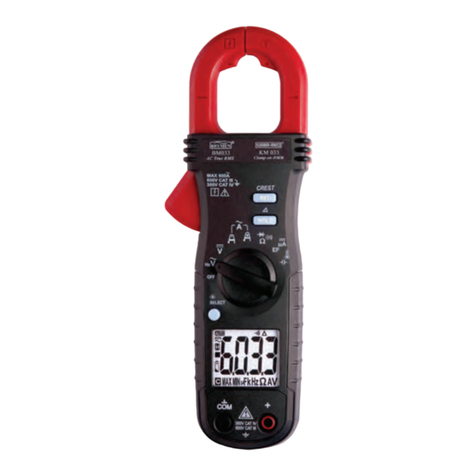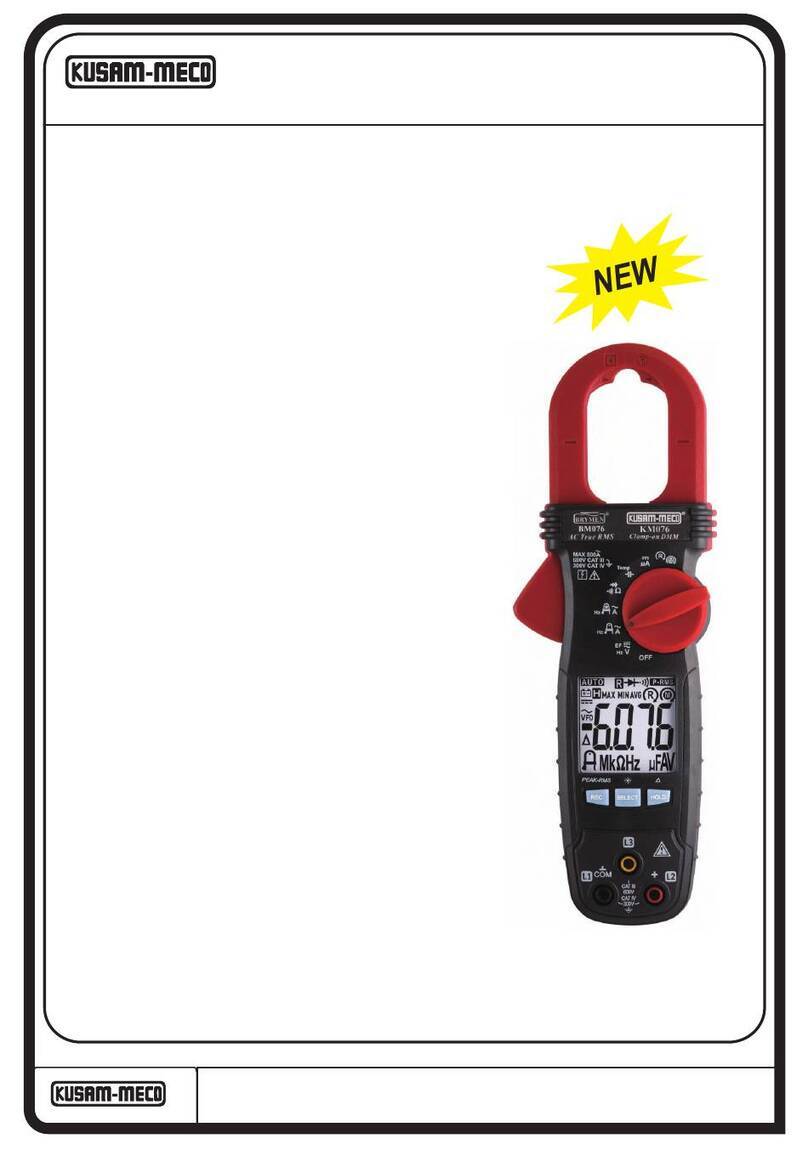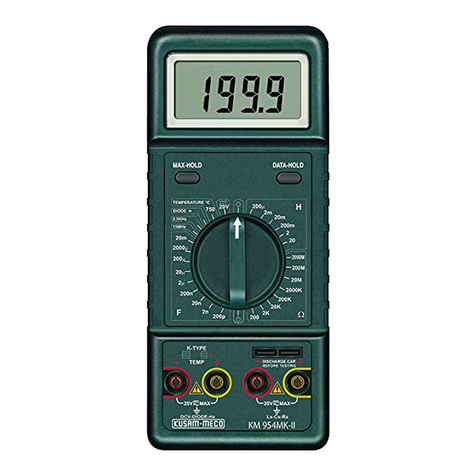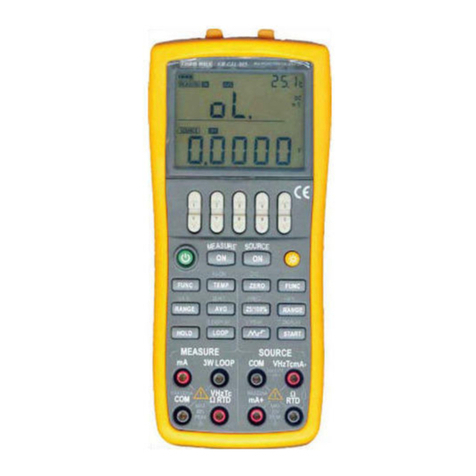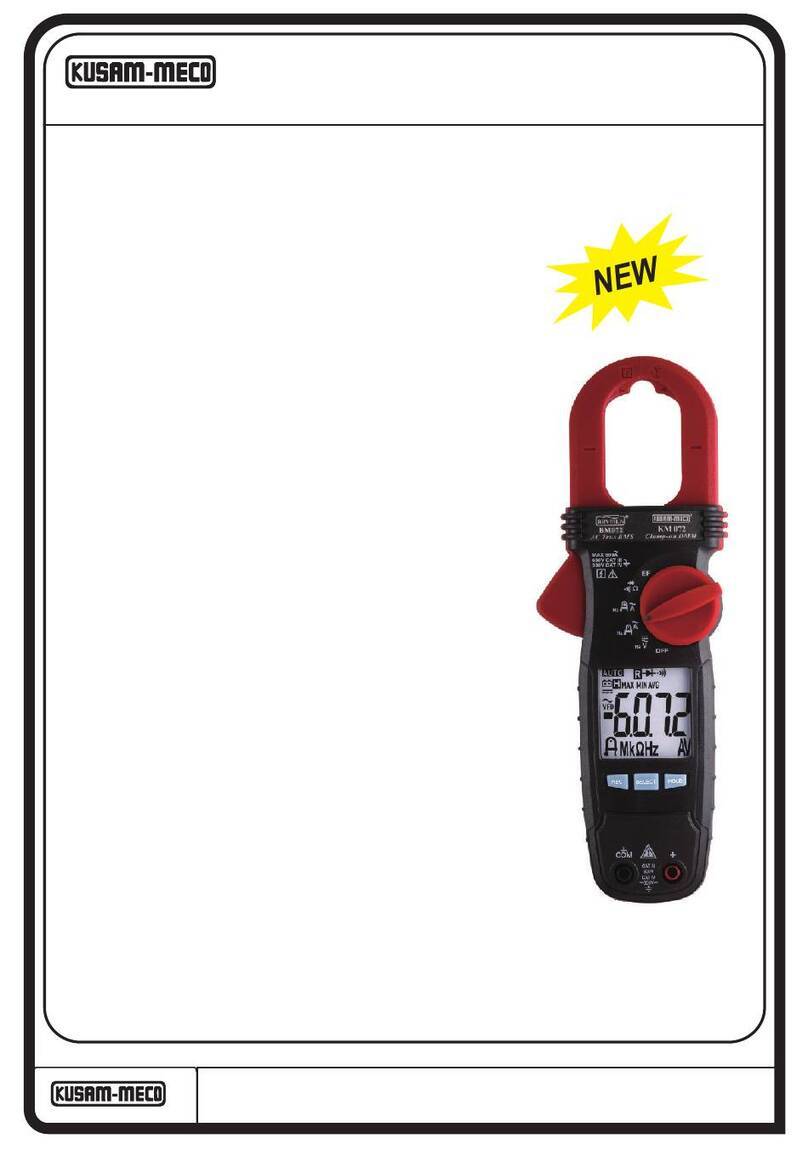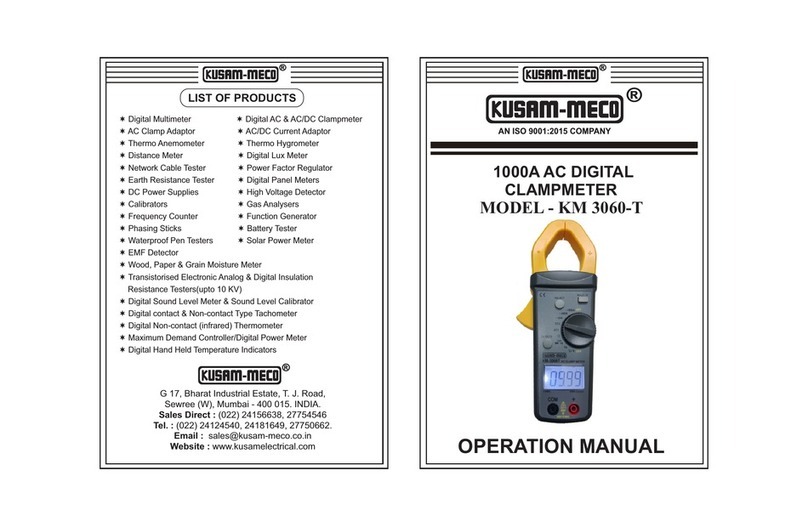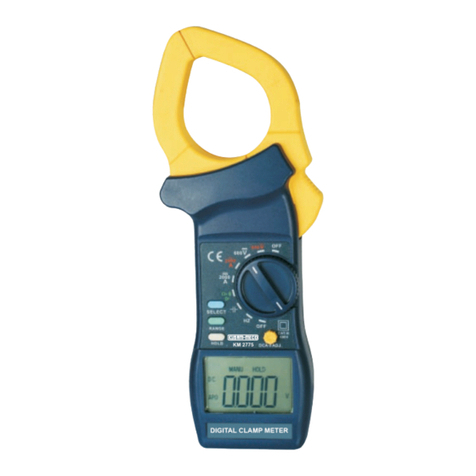®
08
®
09
Section Nine Calibration
Note
• Calibration : In order to keep the designed accuracy of this
Instrument. it is recommendable to calibrate your calibrator once a
year. The following example show the use of recommended
standard equipment to perform the calibration.
• Usage : Never apply more than the max permitted voltage to the
input of the calibrator, otherwise the over voltage will lead to
possible damage to the input section.
• Usage: during the operation, avoid short circuit and never apply
more than the max .permitted voltage to the output of the
Instrument or to a co-working standard device, otherwise any mal-
operation will cause possible damage to their internal circuits.
!Caution
Selecting Standard Equipment
Table 10-1
Calibration
Item
Standard
Equipment
output
Range Accuracy Recommended
Output
Measure
ment
DCA 20mA
DCA 20mA
DCV 26V
Digit
meter
Standard
source
Standard
source
MAX 22mA
MAX 33mA
MAX 33V
+ (50ppm
+0.4uA)
-
+ (100ppm
+0.2uA)
-
+ (12ppm
+15uV)
-
Digit meter
KEITHLEY 2000
Standard resistance:
BZ10-100W
5520(FLUKE)
or equivalent
Ambient Condition for Calibration
Ambient temperature : 23°C+1°C ;
Relative humidity : 45 to 75% RH;
Preheating : standard instrument should be preheated to
specified time;
put this Instrument in calibration environment for 24 hours, then
power, and set it in non auto power off state, and preheat for half
an hour.
-
Note
!!
!!
Power supply for calibrator; during the calibration, it is
recommendable to use 2 1.5V (Lr6) batteries.
Operating Output Calibration
Operating calibration in order of items and calibration points
listed in Table 10-2,
Item
No. Output Range Calibration Point
1DCA/20mA
0
0 FS
FS
1) In power-off state, press the keys (OUTPUT / INPUT) and
(power) simultaneously to power on, and release the
(OUTPUT / INPUT) key only after the LCD displays all the
contents. The Instrument enters into the calibration mode, and
the symbols ‘ CAL 0’ appear in the LCD.
2. Press .V/mA, key , select V function, and display 'V' unit;
3. Press ( ) (? ) key, select output set bit;
4. Press ( )/ ( ) key , change the value of set bit, and the value
can carry or abdicate automatically, and hold the key, the value will
alter constantly after one second.
5. Press (ON/OFF) key, then connect / disconnect the power and
the LCD displays ' ON ' or 'OFF’
Current output
1. Insert the testing probe into the +mA- jack of the meter's output
terminal (OUTPUT), and connect the other end with input terminal of
the Users' meter, see Figure 5-2:
2. Press I V/mA ; key , select mA function, and display 'mA' unit;
3. Press (mA%) key , select output for mA set in form of value or
percentage , and the LCD displays in unit •mA' or 'mA%'; in which:
the value for 0 % is 4mA; the value for 100 % is 20mA.
?
?
?
Figure 5-1
4. Press( ) / ( ) key, select output set bit;
5. Press ( A ) / (V) key , change the value of set bit, and the value
can carry or abdicate automatically, and hold the key, the value
will alter constantly after one second.
6. Press (ON/OFF) key, then connect / disconnect the power and
the LCD displays 'ON ' or `OFF
25% step current output
1. Connect as shown in Figure 5-2;
2. Press :V/mA key . select mA function, and display mA' unit;
3. Press (mA 25% J key , and the LCD displays
' and ' A' symbols;
4. Press (mA°/0) key , select output for mA set in form of value or
percentage , and the LCD displays in unit 'mA' or 'mA%’
5.Press ( ) / ( ) key, and the output value can be changed by 25
in which: the value for 0 % is 4mA; the value for 100 % is 20mA.
6. Repress (mA 25%) key to exit from the step current output. 7.
Press (ON/OFF) key, then connect / disconnect the power and the
LCD displays 'ON or ' OFF
Zero/full point set current output
1. Connect as shown in Figure 5-2;
2. Press I V/mA key . select mA function, and display 'mA' unit;
3. Press mA 100%' key , and the LCD displays , ' ' , '0' and 'FS'
symbols.
